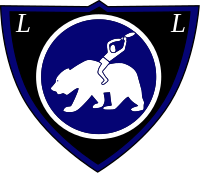
Back حركة لابوا Arabic Лапуаскі рух Byelorussian Moviment Lapua Catalan Lappobevægelsen Danish Lapua-Bewegung German Κίνημα Λάπουα Greek Lapua movado Esperanto Movimiento Lapua Spanish Lapua liikumine Estonian Lapua Mugimendua Basque
This article needs additional citations for verification. (May 2012) |
You can help expand this article with text translated from the corresponding article in Finnish. (June 2023) Click [show] for important translation instructions.
|
| Lapua Movement | |
|---|---|
 | |
| Leader | Vihtori Kosola, Iivari Koivisto, Vihtori Herttua |
| Dates of operation | 1929–1932 |
| Motives | Outlawing communism in Finland (initially) Setting up right-wing dictatorship (later)[1] |
| Ideology | Fascism[2][3][4] |
| Political position | Far-right |
| Major actions | Assault, murder, kidnapping, rioting |
| Status | Outlawed in 1932 |
| Size | At least 40,000 (1930 est.)[5] |
The Lapua Movement (Finnish: Lapuanliike, Swedish: Lapporörelsen) was a radical Finnish nationalist, fascist,[4] pro-German[11] and anti-communist[12] political movement founded in and named after the town of Lapua. Led by Vihtori Kosola,[12] it turned towards far-right politics after its founding and was banned after a failed coup d'etat attempt in 1932.[13] The movement's anti-communist activities continued in the parliamentarian Patriotic People's Movement.
- ^ Ylikangas, Heikki: Käännekohdat Suomen historiassa: pohdiskeluja kehityslinjoista ja niiden muutoksista uudella ajalla. Helsinki: WSOY, 1986. ISBN 9510137456.[page needed]
- ^ Mühlberger, Detlef (1987). The Social Basis of European Fascist Movements. Routledge. ISBN 0709935854.
- ^ Matthew Feldman (2004). Fascism: The 'fascist epoch'. Taylor & Francis. p. 171. ISBN 978-0415290197.
- ^ a b [6][7][8][9][10]
- ^ Siltala, Juha (1985). Lapuan liike ja kyyditykset 1930. Otava. ISBN 978-9511087168.[page needed]
- ^ "När Finland var fem före att bli fascistiskt – högerradikala skjutsade den liberala president Ståhlberg till gränsen". 20 October 2018.
- ^ "Lapporörelsen ville kuva vänstern med våld och terror". 20 October 2018.
- ^ "Bittra veteraner byggde upp den finska fascismen". 9 November 2018.
- ^ "Nationalromantiken spökar i ytterhögerns språkkonflikt". 5 March 2021.
- ^ "Finlands svårdefinierade, fascistiska historia". 29 September 2020.
- ^ Kotila, Pirkko (2006). "Hertta Kuusinen – The 'Red Lady of Finland'". Science & Society. 70 (1): 46–73. doi:10.1521/siso.2006.70.1.46. ISSN 0036-8237. JSTOR 40404297.
- ^ a b Väyrynen, Tarja; Puumala, Eeva (2015). "Bodies of War, the Past Continuous, and (Ar)rhythmic Experiences". Alternatives: Global, Local, Political. 40 (3/4): 237–250. doi:10.1177/0304375415612274. ISSN 0304-3754. JSTOR 24569460. S2CID 147398590.
- ^ Levitsky, Steven; Ziblatt, Daniel (2018). How Democracies Die. United States: Crown.[ISBN missing][page needed]